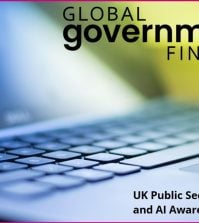Digital identity: what the UK government needs to get right in One Login programme

The UK government is developing a new digital ID system for access to public services. What can the government learn from international best practice as it builds the system?
The UK government has embarked on a new approach for efforts to develop a digital identify system that can be used to help access public services.
Three-and-a-half years on from the decision to hand over the Verify system to the private sector, the ID-checking application forms part of what chancellor of the Duchy of Lancaster Steve Barclay has called “a new system to allow users to access government services through a single portal”.
The One Login programme, which will allow users to create a government account to access services online, or through an app that is being developed in partnership with Deloitte.
Upcoming event: Digital ID workshop
Elements of the programme could begin to be made available this month, according to Barclay, who said in a letter in February that further features and services would then be added over the next three years.
The programme represents a shift in the government’s approach. Its previous effort was known as GOV.UK Verify, a web platform that allowed people to register to prove their identity with the proof then accepted by government departments and agencies to access services. The system was intended to provide assurance for people to register for services such as benefits, but suffered from low take-up.
In 2018, the government announced that it would allow the private providers who undertook the checks for Verify to take over the project. Full handover to these private sector firms has been delayed after Verify was needed to help process the surge in Universal Credit benefit applications due to COVID-19.
Read more: Eight countries set out principles for the future of digital ID
Prior to the pandemic, the government had already begun to develop its new approach. In March 2021, the then Cabinet Office minister Julia Lopez set out plans for “one login for government”, with the aim to better join up online services rather than create a service that could be used by these still-disparate processes.
Appy people
The plan has been under development ever since, with a December 2021 update highlighting that “users’ expectations of service delivery are shifting”, with a move towards increased mobile application use among the trends.
Natalie Jones, the director of digital identity, Government Digital Service, said that GDS wants “to provide a superhighway for users who can and want to use their mobile to apply for government services, so we are building an identity checking app”.
“This will give smartphone users who have a photo ID, like passports and driving licences, the choice to prove their identity to a high level in around 10 minutes. It will do this by making use of Near Field Communication readers and cameras built-in to modern smartphones,” the One Login for Government: December 2021 update stated.
“We will be working with a partner to deliver the app and to accelerate access to services for people for whom this ‘superhighway route’ is the right choice.
“Use of the app will be optional; it will be just one of the ways people will be able to prove their identity based on their preferences and documents available.”
How to get digital ID right
This is what the contract with Deloitte will now help develop. But what does government need to do to get digital ID right? In a report published in January, Global Government Forum interviewed seven national digital leaders, all working at the centre of government to drive transformation across the civil service, to share their thoughts on what was needed to get digital transformation right. The research was led by Kevin Cunnington, a senior UK digital leader who had been the director general of the Business Transformation Group at the Department for Work and Pensions and director general of the Government Digital Service.
Read more: Asking the experts: What do digital leaders need to succeed?
The importance of digital identification was one of the main findings of the report.
It found: “Countries need a single citizen digital identity system, built around either a ‘unique identifier’ – such as the reference numbers lying at the core of many national ID systems – or a ‘golden record’: a ‘single source of truth’ held by a designated civil service body. And citizens must be able to log into a digital ID verification platform, securing access to a wide range of public services.”
Until they develop these capabilities, governments are condemned to manage an ever-growing number of mismatching data sets, often while citizens accumulate separate sets of log-in details for every individual service, the report concluded.
This is exactly the problem that the new UK system is aiming to solve. But, the report added, even creating a single log-in system doesn’t necessarily permit departments to share data on identified individuals with confidence. For that, public bodies must embed this common system of citizen identifiers into their own datasets.
Read more: Former UK GDS chief lists biggest digital challenges
Better bundling of services
Such joining up is just one challenge. Another highlighted by the report is providing the central direction and cross-government planning needed to make it a success.
“True user needs are in bundles,” commented an interviewee from one of the more advanced nations, who spoke under Chatham House Rules, so the quotes in the report are not attributed to individuals. However, the development of the services to recognise those holistic requirements “doesn’t come bottom-up naturally from departments; we had to engineer that collaboration in, top-down”.
The report highlighted the example of Estonia, a longstanding digital government leader, in making progress in identity verification. The country has used a national digital identity system for its online services since 2002, with ID cards – and more recently mobile ID – forming the mandatory authentication (login) and authorisation (digital signing) systems for any public service.
Siim Sikkut, Estonia’s former government chief information officer, said government is currently working to take personalisation and service experience “to the next level” by combining interactions around life events and business events into integrated and proactive bundles – aiming for one minimal interaction per event.
Upcoming webinar: Digital ID from a standing start: Online verification for nations without a national ID card
Digital identity the foundation of success
This might be where the UK government aims to get to, but first it needs to build the foundations. A single digital identity for each citizen is, Cunnington said, “the Rosetta Stone of digital: if you can create this digital identity, you can move forward and produce joined-up services very quickly, because you can link datasets together… If you can’t, you end up getting really quite stuck”.
This is “the great digital divide”, he explained: a “haves and have-nots element is emerging”. Countries able to base their digital ID on an existing national ID system are making faster progress, while other nations “have been struggling to create a proxy digital identity, for a whole variety of reasons”.
If the UK can build its own app to move into the “haves”, it could well be an example to others on the same journey.





















I do not agree with digital identity because what is done with trusting good faith can be used against a person.